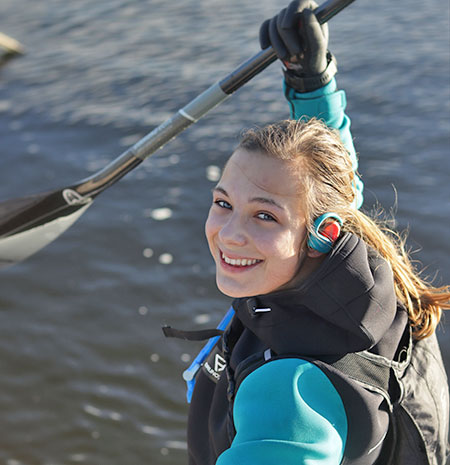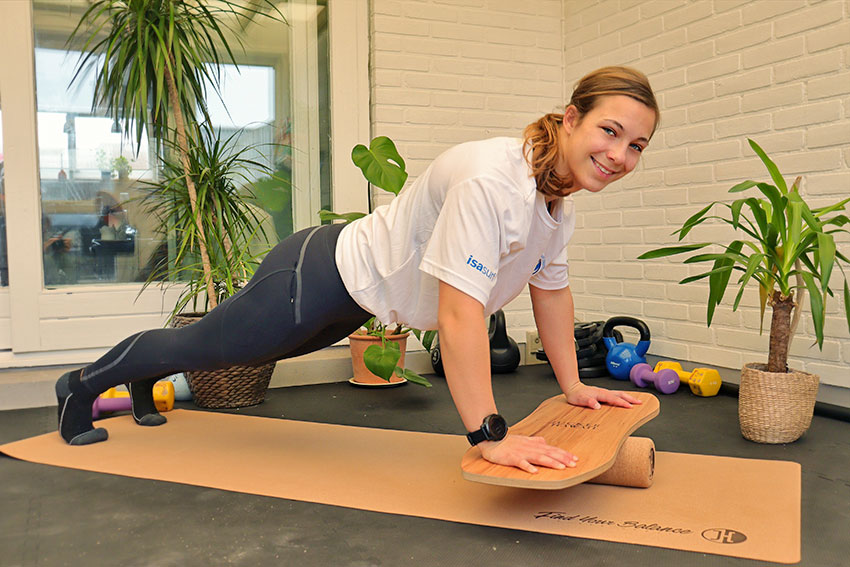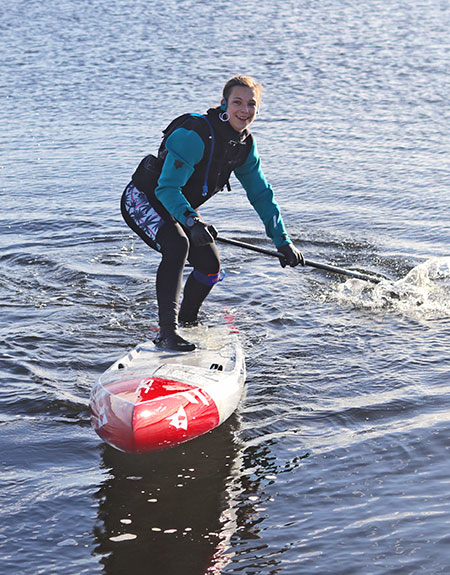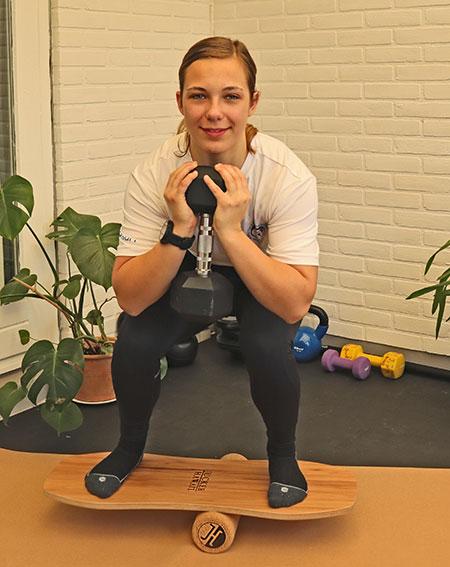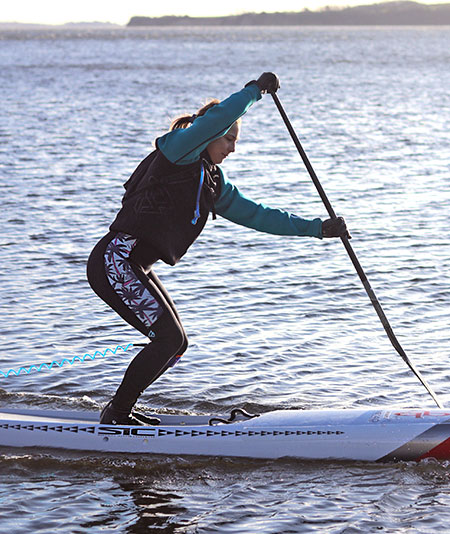Carloline Küntzel had an amazing 2022 year. She made podiums at all the big races and just recently landed an international sponsorship with SIC one of the top brands in the SUP sport. Caroline is now in the midst of her 2023 preparation and training. We were asking her to give our readers some advice for their own winter training.
Thank you Caroline for giving the Stand Up Magazin readers some tips on your own training:
When I started SUP racing in 2018, I quickly figured out that racing on it´s own was good, but if you pair it with some strength, balance and cardio, you could become even faster.
At home in the off-season, I train 1-3 times a day, 6 days a week. I am currently building the base to be able to stay injury free and become stronger. For cardio training I love cycling in the national park where I live. For strength I have a home gym to train, but I also train crossfit on a local team once a week. For paddling I use the ocean in Klitmøller or the lake nearby.
When I started training for strength at 16 years old, all I did was training on a balance board, yoga and body weight exercises. This paired with SUP gave me a good base and understanding of how to use my body as an athlete.
The first tip I share when someone wants to become faster in racing, is to train being stabile on the board. No matter how strong and fit you are, especially in short course racing, it is all about making the least mistakes and feeling secure enough to apply the power you have onto your paddle.
That is why the first exercise I want to share is incorporating a balance board in your strength training. I like core related exercises, so something like a high plank or push up. For the lower body, I like goblet squats. Using a balance board gives you a chance to isolate a specific movement and muscle group, to be able to train the stability and balance. This is perfect to work on in the off-season.

For basic strength I do exercises like pull ups, bench press, squats, deadlift, Russian twists and toes to bar. I like speed and explosiveness. This is one of the reasons why I chose to be a sprinter.
On the water my training is mostly interval training. A tip is to remember to incorporate skill based training, such as using your 15 minute warm up for doing step back turns, footwork or beach starts. This way you don’t need a whole training dedicated to skills on water. I do half of my weekly trainings on flatwater and the other half in the ocean to maintain and develop my all water skills.
What exercise helps with what aspect of paddling?
For the pull of the stroke itself, I find that a one-arm row and bench press are the ones that have helped me the most. Being strong in your shoulders and arms is very important for both long and short distance races.
Lower body exercises are also important. Using your arms and shoulders mostly when paddling isn’t ideal since it limits your speed to what your upper body itself can pull. For getting strong in my lower body, I use exercises like deadlift, lunges, wall balls and goblet squats.
When you are getting stronger you need to learn how to apply your lower body strength to the stroke. Try playing with bending the knees and get lower with your upper body. What you want to achieve is pushing your legs down through the board, leaning forward. Imagine entering all your body weight down on your blade. This way you get more power and apply the strength you have.
Finally, the core exercises
I see it as one of the most important factors, especially if you want to paddle for long or train many hours on water. A strong core contributes to keeping your body in a strong position, not collapsing after each stroke causing pain in your lower back. With a strong core you can put more force onto the stroke, helping to reach a higher pace and acceleration, moving fast between each stroke and being stable on board. Besides the stroke itself, the moment where your paddle exits the water, you need to begin moving forward, tightening your core up to prepare to begin the next stroke.
The exercises I like to use for core work are Russian twists, toes to bar, balance board planks, mountain runners and pushups. You can easily play with your balance board either using it under your shoulders or to make it even more difficult, under your feet. My favorite exercise is high plank transitioning to push up, as you can see on the pictures. For more difficulty, use it under your feet, doing alternating toes touches with your arm to the opposite foot.
Strength itself is important for paddling, but I think some of the most important I have learned through the years is that a general good condition paired with lots of paddling and balance-work can get you pretty far.
For sprinting, I find strength training extra important to achieve the power needed, but just staying active with some cardio and strength, going paddling and keep playing is good enough for a general good race shape.
See you guys on the water,
Caroline
Mike Jucker, editor and publisher of the Stand Up Magazin is also the Co-founder of the brand JUCKER HAWAI’I and provided Caroline with the balance board, if you are interested in his boards use the button below.

